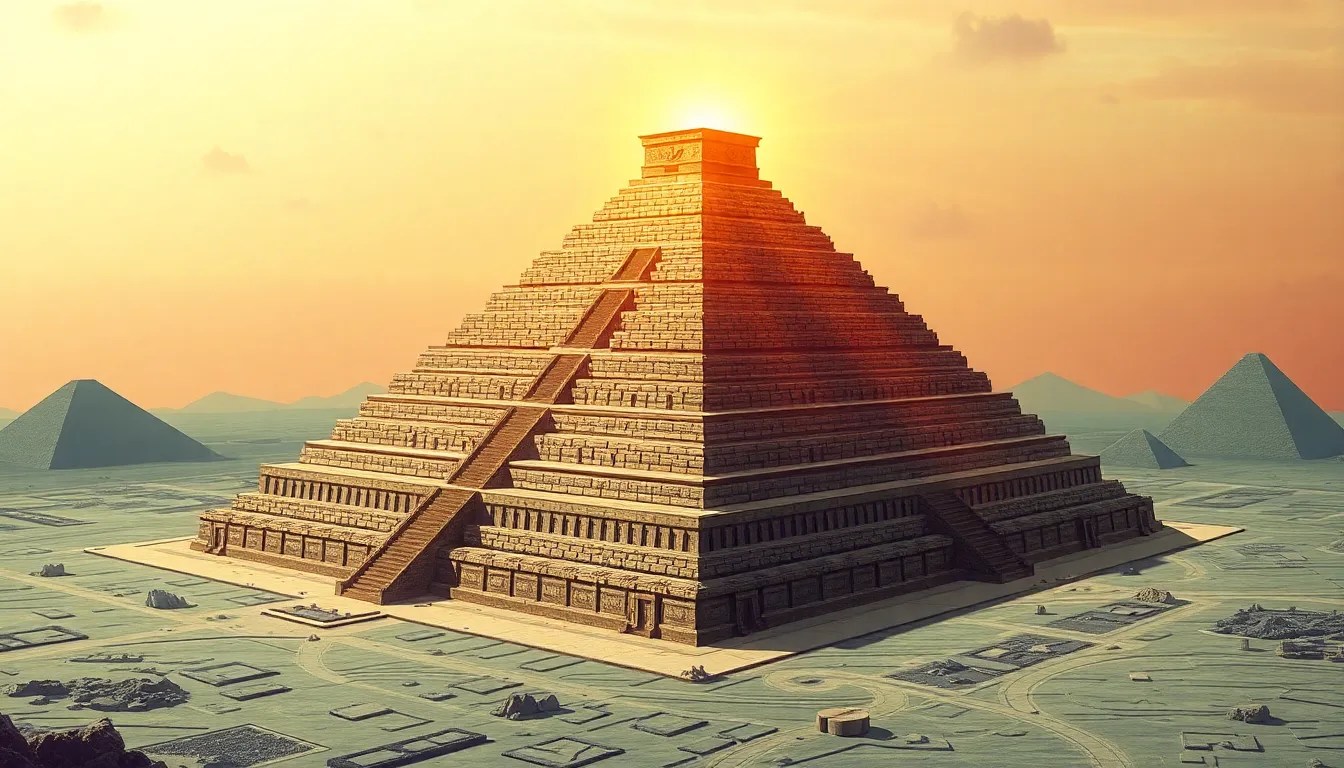The Divine Pyramid: A Hierarchical Map of Egyptian Mythology
I. Introduction to Egyptian Mythology
Ancient Egyptian mythology is a complex and rich tapestry of beliefs that formed the foundation of one of the world’s oldest civilizations. The Egyptians held a variety of gods and goddesses in high esteem, attributing various aspects of life, death, and the natural world to these divine beings. The importance of mythology in Egyptian culture cannot be overstated; it influenced art, architecture, religion, and daily life.
This article aims to explore the hierarchical structure of Egyptian deities, presenting a ‘Divine Pyramid’ that illustrates their relationships, domains, and significance within the mythology.
II. The Concept of the Divine Pyramid
The ‘Divine Pyramid’ is a conceptual model that represents the hierarchical nature of Egyptian mythology. At the pinnacle of this pyramid lies the supreme deity, while the base is formed by lesser gods, spirits, and divine beings.
The significance of this pyramid structure lies in its reflection of the social and cosmological order that the Egyptians believed in. The pyramid symbolizes stability and continuity, echoing the very architecture of their monumental tombs and temples.
In the Egyptian worldview, this pyramid also illustrates the relationship between gods and humans. The higher the deity resides in the pyramid, the more powerful and influential they are in the cosmos and in human affairs.
III. The Supreme Deity: Amun-Ra
Amun-Ra, often regarded as the king of the gods, occupies the apex of the Divine Pyramid. His dual nature embodies both the local god Amun and the solar deity Ra, symbolizing creation, life, and the divine authority over the universe.
- Role in the Pantheon: Amun-Ra was worshipped as the creator god and the god of the sun, often linked with kingship and the afterlife.
- Attributes and Domains: He is often depicted as a man with a ram’s head, representing fertility and power. His primary domains include creation, kingship, and the sun.
- Historical Evolution: Amun-Ra’s worship evolved significantly, especially during the New Kingdom, where he became synonymous with the state and its pharaohs.
IV. The Major Gods and Goddesses: The Middle Tier
Below Amun-Ra in the Divine Pyramid are several major deities, including Osiris, Isis, Horus, and Set. These gods and goddesses played pivotal roles in the mythology and the afterlife beliefs of the Egyptians.
- Osiris: God of the afterlife, resurrection, and agriculture. He represents the cycle of life and death.
- Isis: The goddess of magic and motherhood, she is known for her role in resurrecting Osiris and protecting her son Horus.
- Horus: The sky god and the protector of the pharaoh, often depicted as a falcon. He symbolizes kingship and divine rulership.
- Set: God of chaos, storms, and the desert. He represents disorder and is often in conflict with Osiris and Horus.
The relationships among these deities are complex and often fraught with conflict, reflecting the Egyptians’ understanding of the world and the afterlife.
V. Lesser Deities and Spirits: The Base Tier
The base of the Divine Pyramid is populated by lesser gods, goddesses, and spirits who played essential roles in the daily lives of the Egyptians. These deities governed specific aspects of life and nature.
- Fertility and Agriculture: Deities such as Hathor (goddess of love and fertility) and Osiris (also linked to agriculture) were crucial for ensuring bountiful harvests.
- Protection and Guidance: Gods like Bes (the household god) and Taweret (goddess of childbirth) offered protection and guidance in daily life.
- Nature Spirits: Many spirits were associated with natural elements, such as rivers, trees, and animals, often invoked in rituals for blessings.
The interactions between humans and these lesser deities were significant, as rituals and offerings were made to seek their favor and assistance in various aspects of life.
VI. The Interconnections: Myths and Stories
The myths surrounding these deities illustrate the hierarchical structure of Egyptian mythology and highlight their relationships and conflicts. Key stories, such as the myth of Osiris and Isis, showcase the themes of death, resurrection, and the struggle between good and evil.
- Osiris and Isis: The story of Osiris’s murder by Set and his subsequent resurrection by Isis emphasizes themes of loyalty, love, and the promise of life after death.
- Horus vs. Set: The ongoing battle between Horus and Set represents the struggle for power and order against chaos, mirroring the political landscape of ancient Egypt.
These narratives reflect societal values, such as the importance of family, loyalty, and the divine right of kings, while also explaining natural phenomena like the flooding of the Nile and the cycles of the seasons.
VII. The Influence of Egyptian Mythology on Modern Culture
The legacy of Egyptian mythology remains influential in modern culture, inspiring countless works of art, literature, and film. The fascination with ancient Egyptian beliefs continues to captivate audiences around the world.
- Art and Literature: Artists and authors draw on Egyptian themes, characters, and mythological narratives, reinterpreting them for contemporary audiences.
- Film and Media: Movies like “The Mummy” and “Gods of Egypt” showcase the allure of Egyptian mythology, albeit often with creative liberties taken.
- Archaeological Discoveries: The unearthing of ancient texts, tombs, and artifacts has provided deeper insights into the Divine Pyramid and the beliefs of the ancient Egyptians.
VIII. Conclusion
The hierarchical structure of Egyptian mythology, as represented by the Divine Pyramid, offers a fascinating glimpse into the beliefs and values of one of history’s most intriguing civilizations. Understanding this mythology not only helps to comprehend ancient Egyptian culture but also reveals the enduring significance of mythological frameworks in human history.
As we reflect on the relevance of the Divine Pyramid today, it becomes clear that these ancient stories continue to resonate, reminding us of the universal themes of life, death, and the quest for understanding our place in the cosmos.




